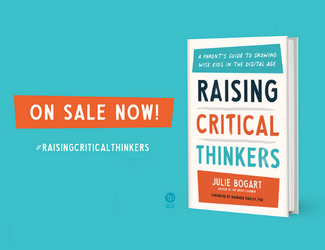Start with Facts and Curiosity

We believe we’re sharing facts, when in fact (ha!) we’re sharing interpretations of facts.
Your child is angry.
You say: “That video game is making you mad. Let’s take a break.”
Your child is squirmy.
You say: “Looks like you need a snack.”
Your child falls and scrapes a knee.
You say: “That must have hurt!”
All of your comments? They are not facts. We move from noticing what is (a child’s volume or scrunched up face) to labeling it (anger) to interpreting what it means (must be video games).
What If?
- What if video games have nothing to do with the child’s feelings?
- What if the child isn’t hungry?
- What if your child’s scraped knee isn’t a big deal to the child?
When we move swiftly to interpretation, we are telling our kids “I know your insides better than you do.”
Interpretation is what we ALL do all the time to everyone, by the way. Not just our kids.
The antidote is curiosity.
Ask: “Are you angry? Is it because of something that happened in your video game or something else?”
Ask: “Do you want a snack?”
Ask: “You’ve got a scraped knee. How are you holding up?”
Less busy body energy and more interest. Less carefully crafted narrations of how our children appear to us and more ordinary conversation about living together.
It’s great when you’re wrong too. I remember a time when one of my sons was instantly furious! I assumed it was due to the video game he was playing. I started to ramp up, and then remembered: I better ask before I assume.
Sure enough, his anger was due to self-criticism. He had missed an important party for a friend. When he realized it, he was devastated.
How reasonable! How wrong I was about to be.
Facts and Curiosity
We interpret our children’s behavior constantly as though we are right. Start with facts and curiosity. This goes for all conversations, really. Get curious, resist the temptation to make meaning for others, learn.
I talk about this in Raising Critical Thinkers, and GUESS WHAT? I took the exercises in the book and added a slew more. I included journal prompts, checklists, ranking bars, and spaces for kids to write directly in the workbook: BECOMING A CRITICAL THINKER (ages 12-18).


















